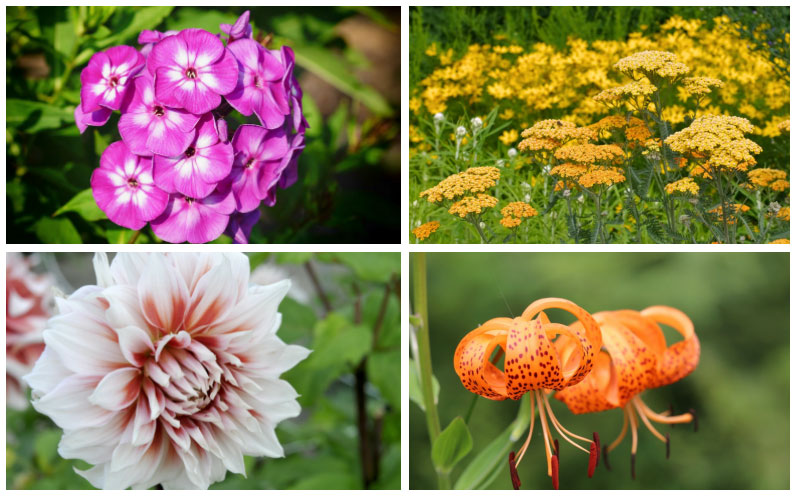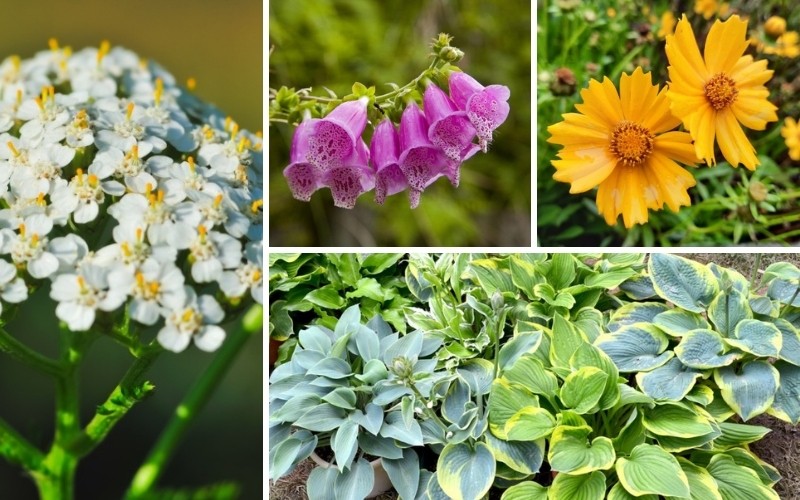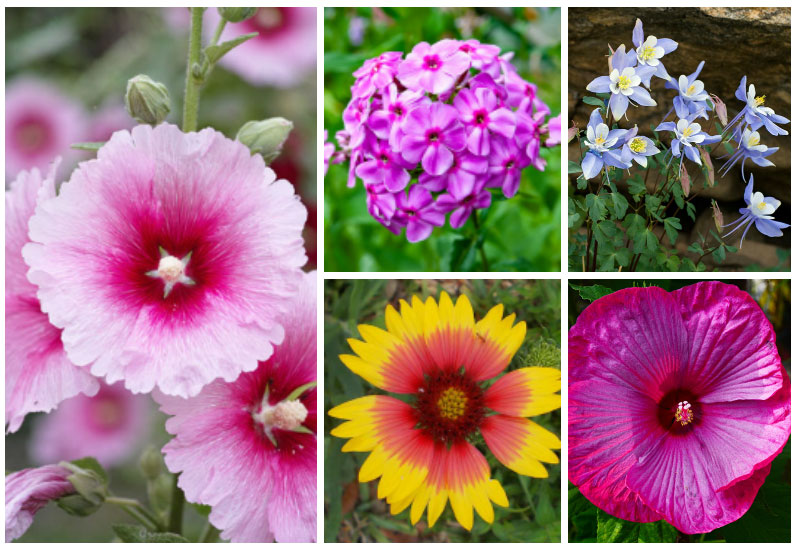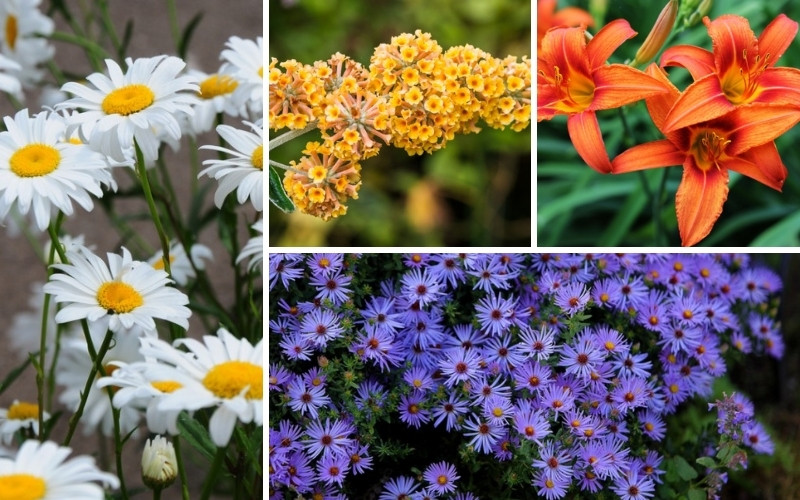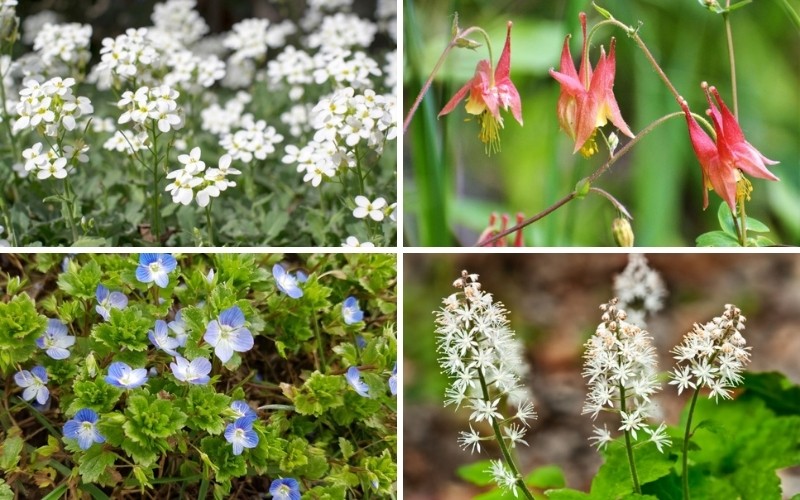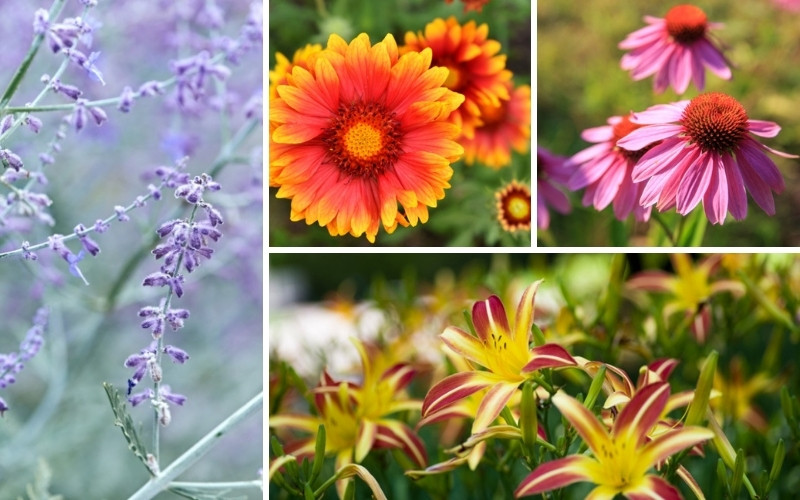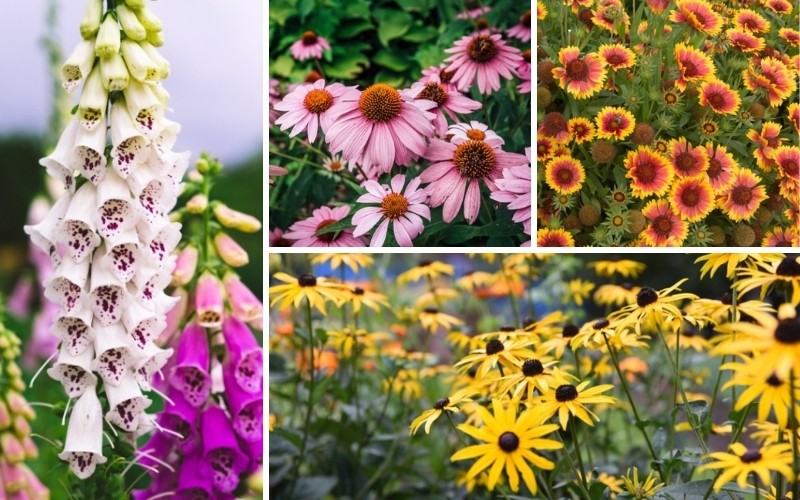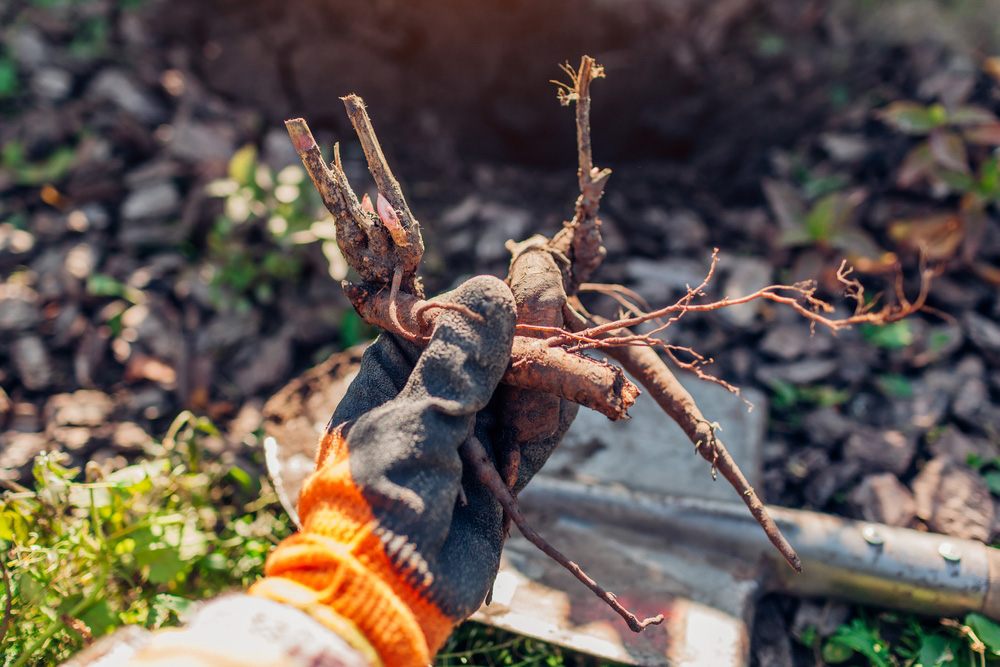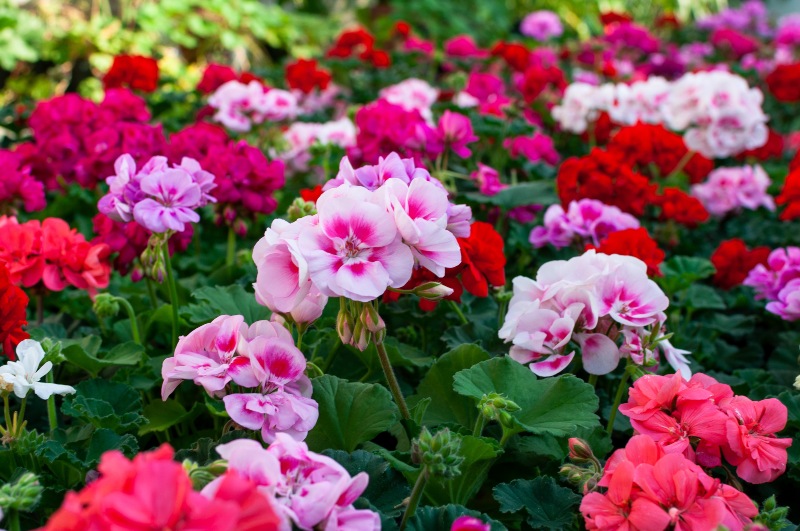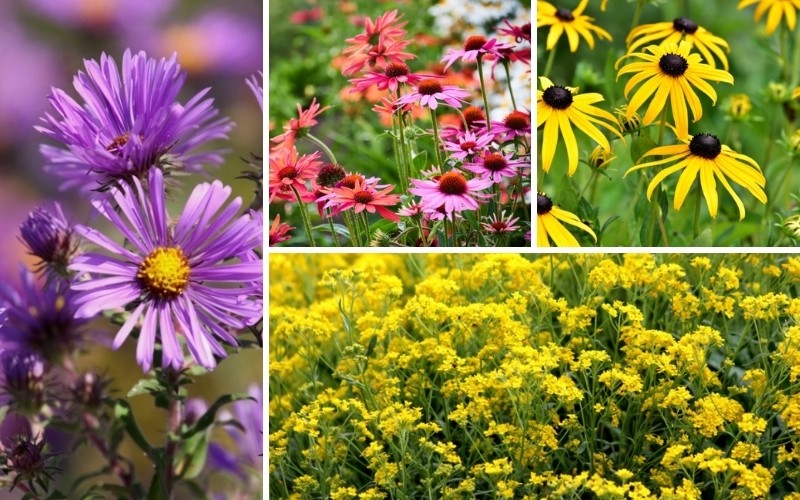
The state of Vermont encompasses USDA plant hardiness zones 3b to 5b with much of the state sitting squarely in zones 4a to 5a. That means that flowers and plants that do well in zone 5b might not survive the harsh winters in zone 3b as many cold hardy perennials are hardy in zones 4 through 8.
While it may be a challenge to choose perennials for the coldest part of Vermont, there are perennials for nearly any location.
Consider these hardy perennials for filling your Vermont perennial beds.
Butterfly Weed (Asclepias tuberosa)
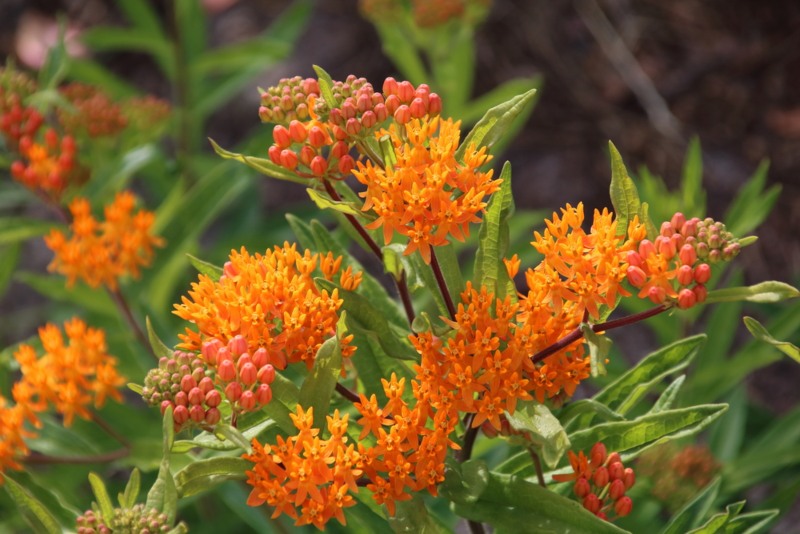
Not only does butterfly weed look gorgeous in the garden it is a host plant for the stately Monarch butterfly, too. This perennial produces clusters of orange flowers in a loose head and blooms for an amazing 3 months. It grows to heights of 2 feet with an equal spread. It does well in average soil and prefers full sun. It is hardy in USDA plant hardiness zones 3 through 9 making Butterfly weed a great choice for your Vermont flower bed.
Blue False Indigo (Baptisia australis)
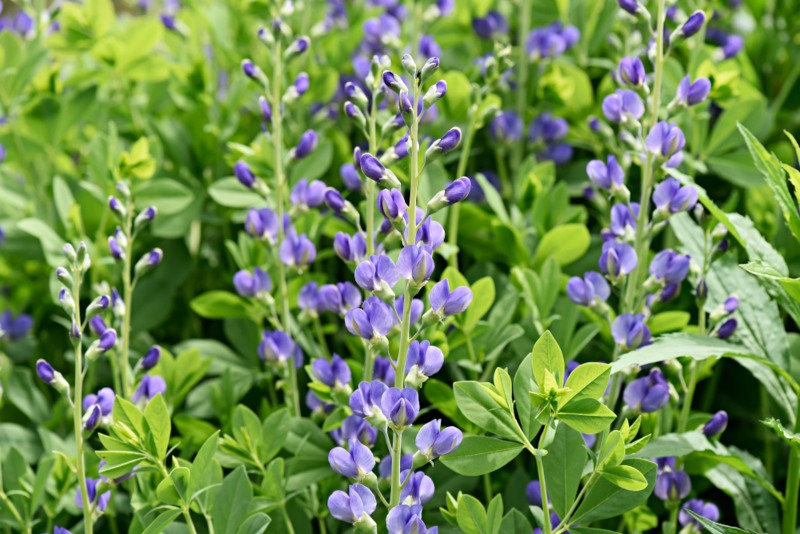
Blue false indigo is a delightful spring flower that blooms after the spring bulbs have faded. It grows to heights of 2 to 3 feet with attractive green foliage. While the foliage is mounding, the flowers bloom along tall stems held above the plant. Blooms resemble indigo-blue pea blossoms and last for several weeks. It prefers average, well-drained soil and does best in full sun. It is hardy in USDA plant hardiness zones 3 through 9.
Blazing Star (Liatris spicata)
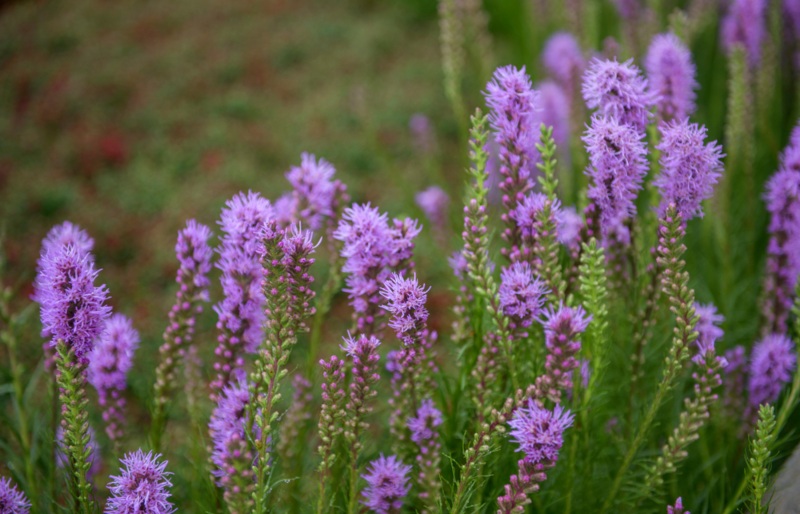
Blazing stars, also known as gayfeather, put on quite the show in mid to late summer. These amazing flowers bloom along a tall spire that is held above the foliage. Colors range from white to blue and purple to a deep rosy purple. They grow to heights of 3 to 4 feet and do best in full sun. Blazing stars attract bees and butterflies and are hardy in USDA plant hardiness zones 3 through 9.
Basket of Gold (Aurinia saxatilis)
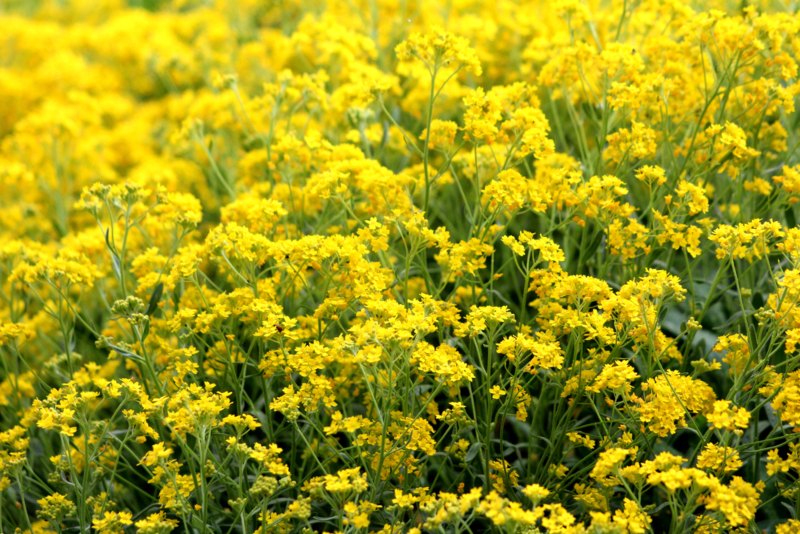
If you are looking for an attractive ground cover this low-growing perennial may be for you. The gray-green foliage is evergreen and topped with a profusion of golden yellow flowers in the spring. It blooms for 4 to 6 weeks and grows to heights of 6 to 12 inches. It is drought tolerant and thrives in average soil. It prefers full sun and is ideal for adding to rock gardens or as edging to your perennial bed. Basket of gold is hardy in USDA plant hardiness zone 3 through 7.
Learn more Basket of Gold Growing Tips here
Golden Marguerite (Anthemis tinctoria)
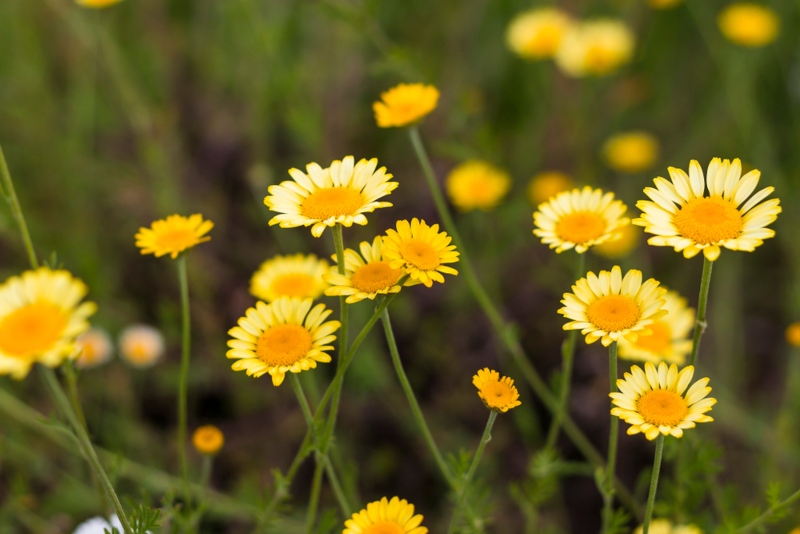
Golden Marguerite is as tough as it is beautiful. This little gem tolerates poor and dry soil making it ideal to add to areas where other flowers struggle. It grows to heights of 2 to 3 feet with a similar spread. Foliage is fragrant and ferny with an abundance of bright gold, daisy-like flowers. It prefers full sun. Golden Marguerite makes an excellent cut flower and looks great in informal beds. It is hardy in USDA plant hardiness zones 3 through 8.
New England Asters (Aster novae-angliae)
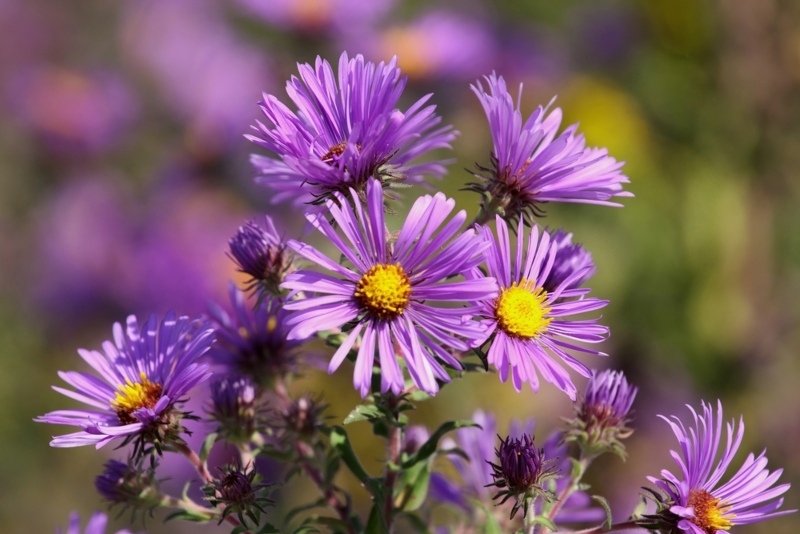
New England asters are an excellent choice for adding late season color the flower bed. Their finely toothed, daisy-like petals attract both bees and butterflies and bring the garden to life with color and movement. Flower colors range from white to lovely shades of pink and purple with contrasting yellow centers. They grow to heights of 1 to 6 feet with a 1 to 3 foot spread and thrive in average, well-drained soil. They prefer full sun but will grow in partial shade. New England asters are hardy in USDA plant hardiness zones 3 through 8.
Coneflowers (Echinacea spp.)
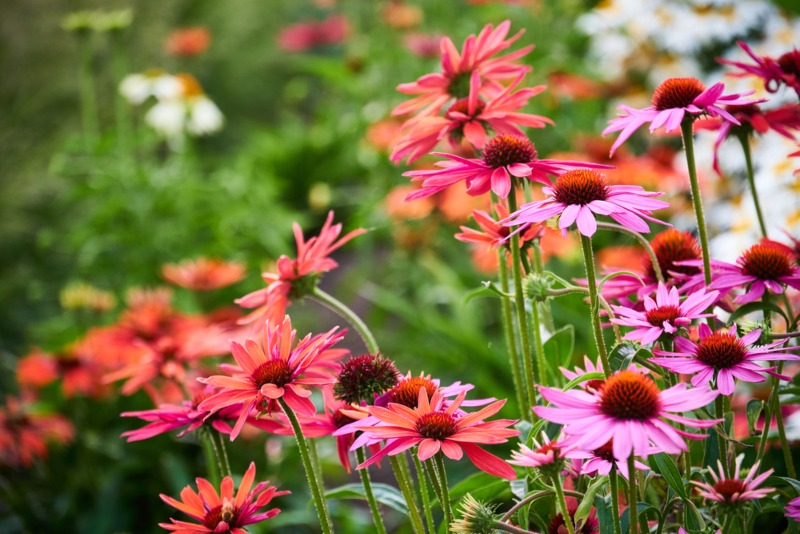
Coneflowers can’t be beat for a dramatic display of color that lasts from summer until frost. These flowers feature daisy-like petals that fold backward exposing a cone of contrasting color. While purple coneflowers are the most popular, there are many varieties to choose from ranging from white to pink and lovely shades of yellow and gold. Coneflowers prefer full sun and thrive in average, well-drained soil. They are hardy in USDA plant hardiness zones 3 through 10.
For more information on Growing Coneflowers, see our growing guide here
False Sunflowers (Heliopsis helianthoides)
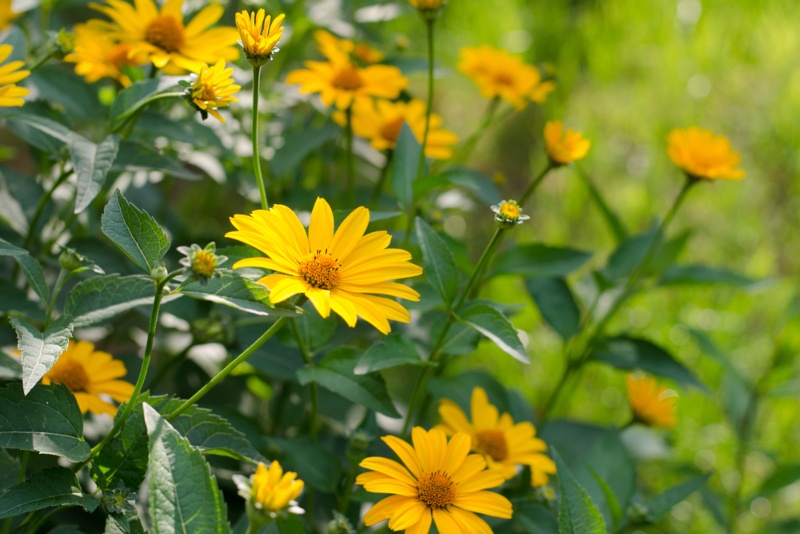
False sunflowers may not be as towering as traditional sunflowers, but they come with the advantage of returning every year with no help from you. These cheery flowers produce blooms that are 2 to 3 inches wide atop 3 to 6 foot plants. The orange yellow blooms begin in early to mid-summer and continue until frost in the fall. They thrive in average, well-drained soil and will tolerate dry conditions. They prefer full sun but will tolerate partial shade. False sunflowers are hardy in USDA plant hardiness zones 3 through 9.
Daylilies (Hemerocallis)
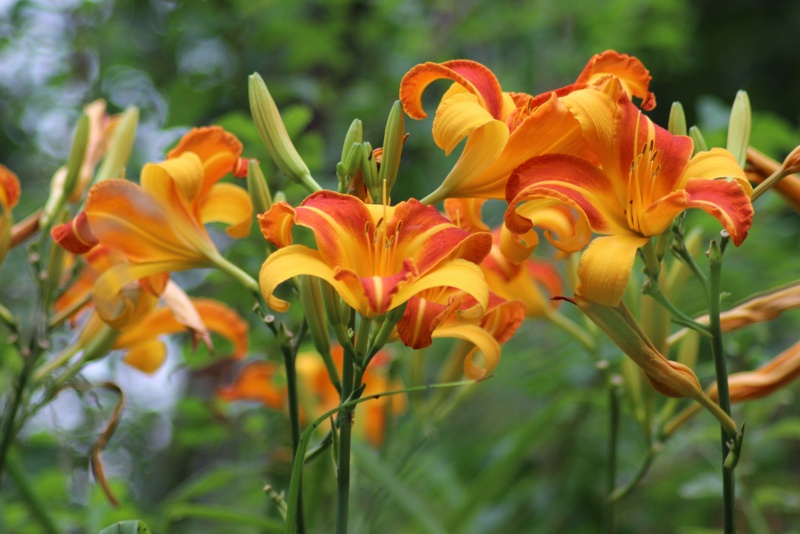
Virtually carefree, daylilies bring color and cheer to nearly any garden. Although many daylilies have a short blooming season of only a few weeks, planting several varieties and staggering the blooming time can extend them well into the summer and fall. Although they prefer fertile soil, they will tolerate nearly any soil. Daylilies grow to heights of 1 to 5 feet, depending on the cultivar. They prefer full sun, but will grow with some light shade. Daylilies are hardy in USDA plant hardiness zones 3 through 9.
Peonies (Paeonia)
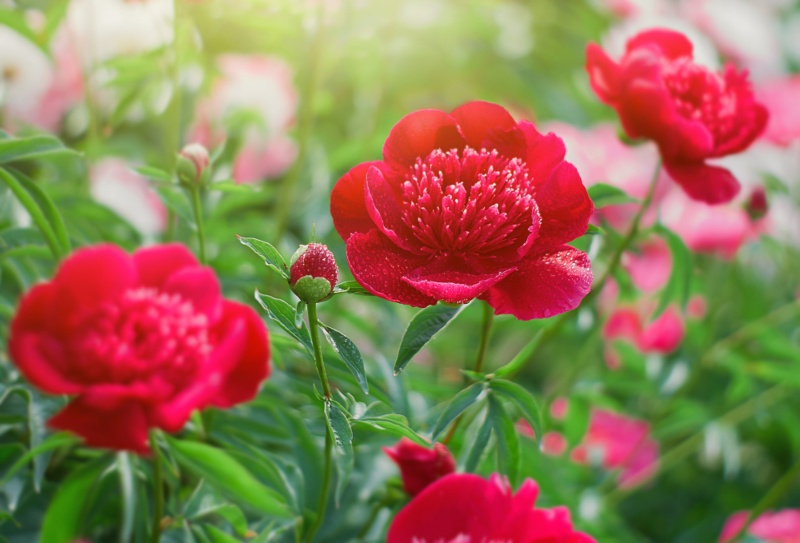
Peonies are a beloved spring blooming perennial prized for its big showy blooms and intense, sweet fragrance. They grow to heights of 3 feet or more and produce an abundance of blooms in white, pink and red with many bi-colors, too. These showy flowers bloom in late spring making the transition between early spring flowers and later summer perennials. They are easy-to-grow, but do require staking to support the massive blooms. Peonies prefer full sun and average, well drained soil. They are hardy in USDA plant hardiness zones 3 through 9.
Black-Eyed Susan (Rudbeckia hirta)
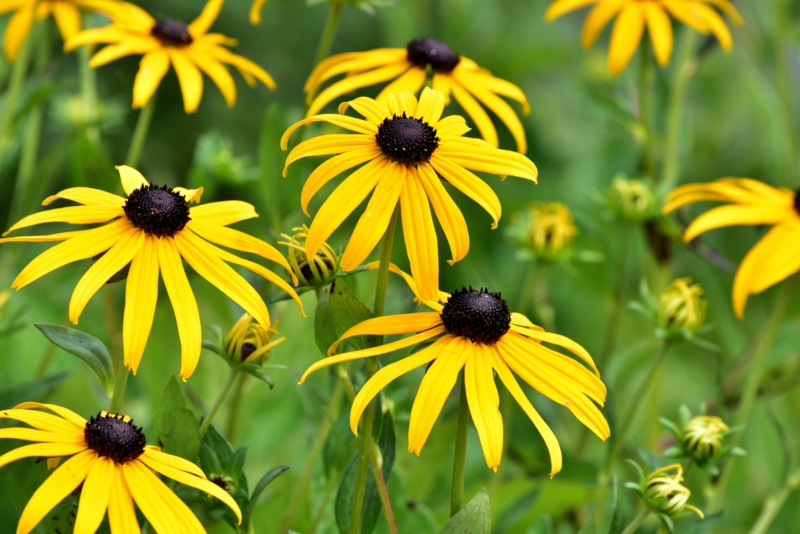
This popular flower produces large daisy-like blooms with golden orange petals and a dark center. Blooms are held above the foliage on a stiff, upright stem and they bloom from summer until the frost arrives in the fall. These showy flowers can be either single or doubled petaled and thrive in average, well-drained soil. They prefer full sun and are hardy in USDA plant hardiness zones 3 through 9. For a dramatic display pair black-eyed Susans with purple coneflowers or plant them near other flowers with blue or purple hues.
The perennials above can be grown in nearly all parts of Vermont, but it is important to note that hardiness zones can vary among cultivars of the same flower. For this reason it is important to check the plant identification label, or consult a reputable source, to make sure the variety you are choosing will thrive in your plant hardiness zone. Likewise, other growing conditions, such as lighting and soil conditions, can vary.





